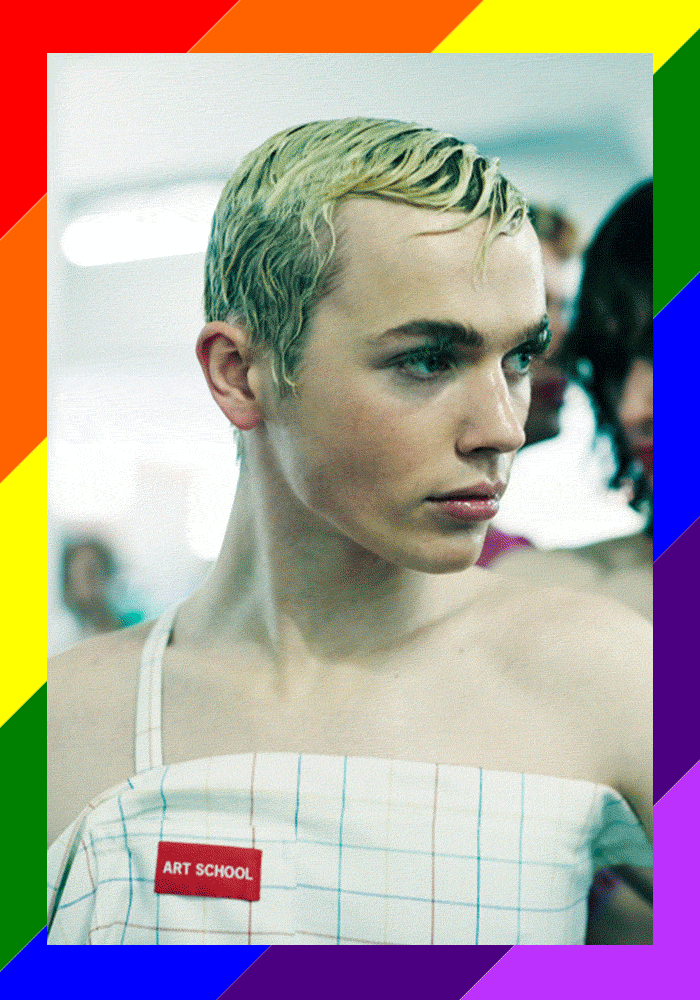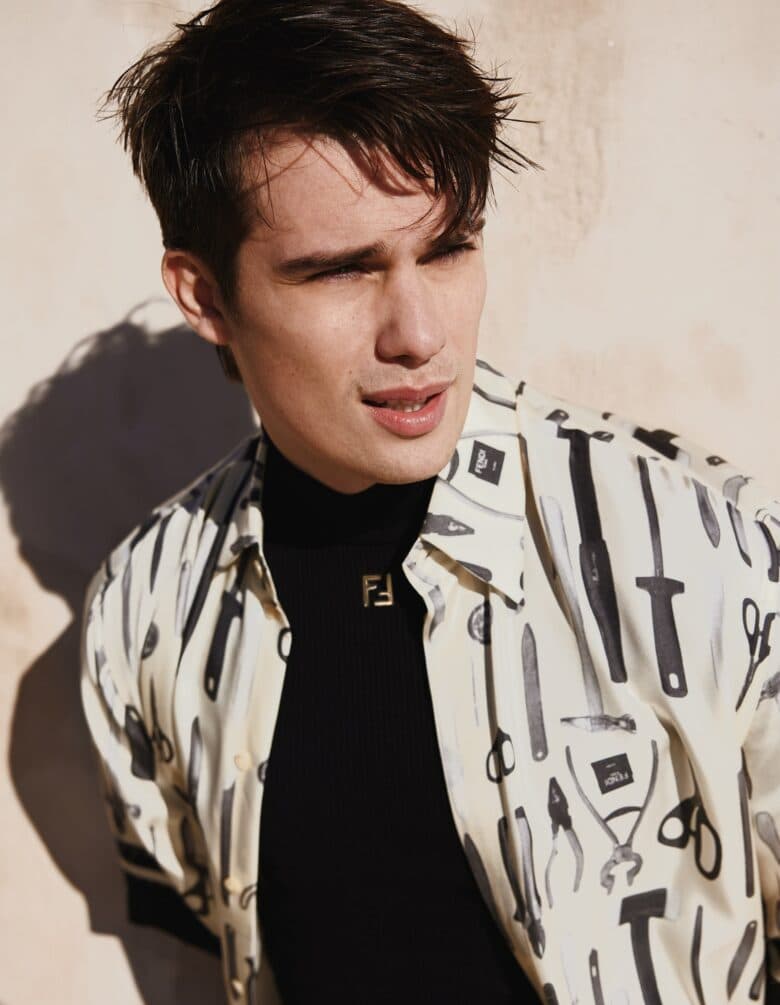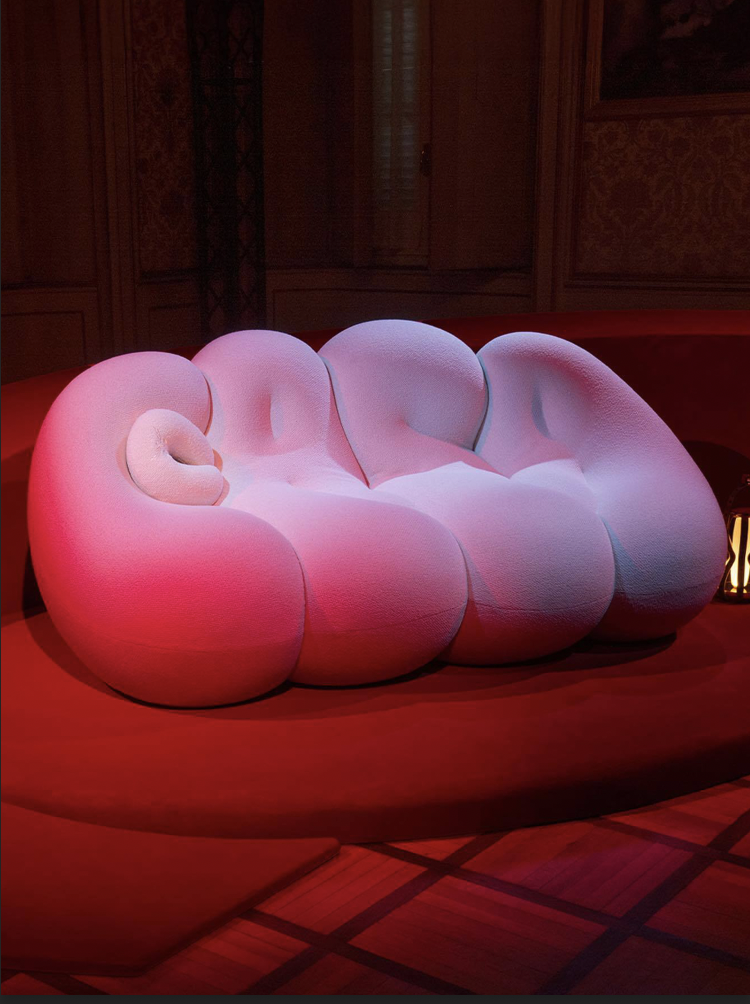How the LGBTQ+ community is shaping fashion in 2k18
The first Gay Pride march took place in London on 1 July 1972. In the event’s 45-year history, swathes of rainbow fabric have acted as a hopeful symbol in a centuries-long struggle by LGBTQ+ people for acceptance, recognition and equal rights. As queer fashion proliferates, designers are increasingly realising the cachet that comes with aligning themselves with social activism (in fact, it’s big business: ‘Pride Outfits’ searches alone on Pinterest were up +1106% this year around the world). In the last week my inbox has been full of brands pushing their “Love is Love” emblazoned apparel and technicolour tees. Does planet fashion run the risk of commercialising a sign intended as an emblem of inclusivity in 2k18? What real positive changes are being made to promote diversity on the runway? And who are the next-gen designers stepping out of the binary and celebrating the individuality of queer style? Hunger investigates.
The LBGTQ+ community and their relationship with the fashion world is no new thing and yet they have long been underrepresented on the cover of magazines and on the catwalk. Speaking to Queer Direct, an LGBTQ+ Artist support network, curatorial platform and arts programme initiated by Gaby Sahhar and co-run with Lily Cheetah Nicol, they stress that what has often been lacking in fashion is a “sustained support that validates, empowers and recognizes, without fetishizing for the patriarchal gaze, queers, women and miniority people.”
“We can experience different ways of feeling our gender and sexuality through our presentation,” Lily says. “I think an awareness and acceptance of queer forms of presentation is important because we are no longer seen as frightening or threatening to some groups of people, which makes us less vulnerable on the street (in some places). In conjunction with this are some cis, straight people who choose to identify and present as ‘queer’ because they think it’s some kind of new counterculture, and in some manifestations, especially where those people are still judgmental or restricted around having non-hetero relationships, that’s frustrating.”
Lily says that authenticity is key when building a lasting dialogue around the shifting landscape of fashion, “as someone who has experienced homophobia, known and dated people who’ve been attacked based on gender presentation or who we were kissing, to have that eroticized or appropriated by people with no lived experience of queer sexualities and gender-related troubles can seem trivializing if it’s just being seen and used as the new anti-establishment fashion.”

There is however a positive shift, beyond stereotypes. “People are expanding their awareness [that] androgyny [is] the sole signifier for gender non-conformity,” Lily adds. “As androgyny isn’t always inherently queer in itself.” Charles Jeffery, for example, refuses to conform to the white-tee-and-blue-jeans school of unisex dressing – he designs intense, theatrical, colour-filled creations for people regardless of their age, sex, gender, race or cultural background and collaborates with a team of talented creatives from the LGBTQ community. His AW18 collection was based on his own tough upbringing in growing up gay in Scotland. “Anger is an energy,” he says. “And when I get angry I get Scottish.” It was one of the finest shows at Fashion Week.
“There is less pressure to conform and a revived interest in wearing what suits the individual,” Natalie Kingham, buying Director at MATCHESFASHION.COM tells us. “Matty Bovan is a great example of a designer who crosses the boundaries – his collection sells out every time it hits the site, as his pieces are so unique and limited edition. Charles Jeffery was another innovator we bought specifically for women, his tailoring has had a great response. There are increasingly lots of menswear designers whose collections are more gender fluid which fits with our womenswear edit from Martine Rose to Craig Green. For AW18 we have bought many more menswear collections (for women) including Raf Simmons, Haider Ackerman, Gucci and Aries. We have a pioneering fashion customer who isn’t afraid to be brave in their style choices and we know they’ll respond well to innovation and a point of difference.”
Inclusive fashion has to be reflective of the people that live in that world, rather than turning a collection into a tokenistic trend. ART SCHOOL design with the gender queer body in mind – and their SS19 collection a colourful interpretation of the trans-aware tailoring. Dan Owens, This Is A Book For Parents of Gay Kid author and founder of new gender-queer label Radimo, called on a group of fascinating individuals part of the LGBTQ community in Los Angeles, including trans advocate Mile Mckenna, to explore the future of dress earlier this year. “I’ve always hated fashion but not really understood why,” Owens stresses. “My mother would dress me in thin fabrics and flouncy dresses. I felt so uncomfortable. In the queer community people expect you to look ‘different’ or in my case ‘masculine.’ So, I toyed with masculinity – suits, bow ties, button-ups – but I didn’t like that either. I wanted to create the room to explore.”
There’s also a new guard of casting directors bidding to change the idea that LGBTQ+ visibility in fashion is a ‘radical’ move. “I street cast and cast via social media like Instagram,” says Kevin Amato, the New York-based photographer and casting director who has worked with the likes of Hood by Air, Eckhaus Latta and VFiles. “I look for personality and style of course…but I like being surprised whether it’s in their sense of style or lifestyle choices. People that push their comfort zone. I think the world I come from and people I naturally surround myself with are diverse and that’s the world I typically source models from. Whether my photography or casting there is always an extension of me. Regardless of ones aesthetic or perhaps subculture we can all relate to one another in our core beliefs. And that’s being accepted and respected.”

